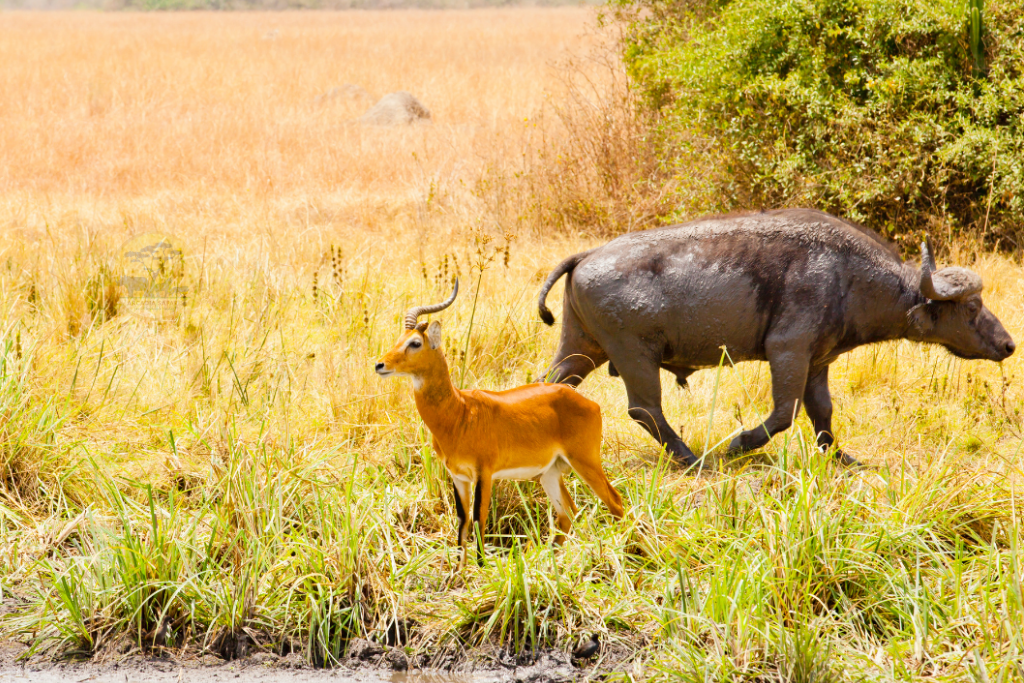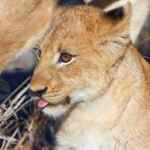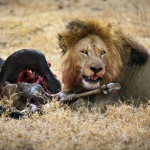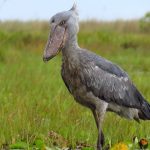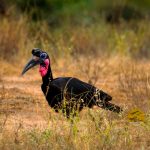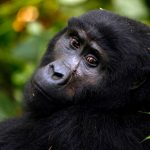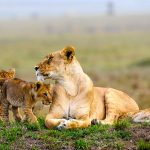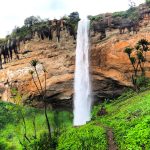East Madi Wildlife Reserve: A Gem in the Wild of Uganda, Still Hidden.
Tucked away in northwestern Uganda, East Madi Wildlife Reserve is among those least toured, yet interesting conservation areas that offer special encounters with the wild. Found within Adjumani district, this reserve forms part of the Albertine Rift Valley and therefore boasts a great variety of flora and fauna. Not as renowned as its big siblings, such as Murchison Falls National Park, East Madi Game Reserve offers travelers a tranquil and alternative route.
Location and History of East Madi Wildlife Reserve.
The East Madi Wildlife Reserve is located in Adjumani District, close to the Albert Nile, with different ecosystems formed both by the river and the surrounding savannahs. It was gazetted in 2002 and is among the smaller protected areas of Uganda, approximately 830 sq km in size. It still contributes much to biodiversity conservation within the country, as it preserves different animal species with their habitats. Its proximity to Ethiopia and South Sudan adds to its geographical and ecological significance.
Wildlife in East Madi Wildlife Reserve.
One of the highlights of the reserve is its diverse array of wildlife. Though less populated with large game as compared to other parks like Murchison Falls or Queen Elizabeth, the reserve is a home to:
Elephants: East Madi happens to be one of the sanctuaries for Uganda’s elephant population, where tourists visit the place and often see them roam through the reserve.
Buffaloes: Normally found in herds, these buffaloes form part of the dominant grazers in East Madi, adding to the dynamic ecosystem of the nature reserve.
Antelopes: A few species of antelopes, like the Uganda kobs and oribis, are seen to live in the grassy plains.
Primates: The major primate family represented here includes baboons and vervet monkeys, offering a rich primate experience.
Birdlife: Birdwatchers are quite spoilt in East Madi. With an impressive account of over 200 bird species within the reserve, many of these are endemic to the region. Other species include African fish eagles, Abyssinian ground hornbills, and white-thighed hornbills. The river banks and wetlands are good places to see the migratory waterbirds.
Vegetation and Landscape of East Madi Wildlife Reserve.
The landscape of East Madi Wildlife Reserve combines rolling savannah grasslands with dry woodlands and thick riverine forests along the fringes of the Nile River. A number of miles away, the scenic views of open plains meet the eye to create a tranquil atmosphere for the traveler. The savannah is dotted with acacia trees, while variegated plant species dotting the woodland areas provide food for the rich biodiversity within the reserve.
Besides wildlife, vegetation in the East Madi area plays a critical role in sustaining local communities for fuel, medicine, and building materials. The different conservation initiatives here ensure that local people are actively involved in the sustainable utilization of the resources.
Unique Ecosystems of East Madi Wildlife Reserve.
From the savannah grasslands to the forests and wetlands along the Albert Nile, East Madi holds a variety of ecosystems. Landscapes coupled with a variety of animal populations are born from these ecosystems. The Albert Nile forms one of the lifebloods, especially during the dry seasons when wildlife flocks to the riverbanks. Along the river are formed wetlands that are prolific nurseries for both aquatic life and birds that feed on them.
Cultural Encounters in East Madi.
Among those moments of enrichment during a visit to East Madi Wildlife Reserve are interactions with the local communities. The inhabitants of this region are the Madi people, indigenous to this land, culturally attuned with both the landscape and wildlife. Their traditional knowledge about the landscape, animal behavior, and medicinal plants imparts a unique perspective to visitors on how humans and wildlife can coexist.
These are cultural tours including traditional dance, storytelling, and teaching of local culture and agricultural methods. A community-based tourism approach not only allows visitors to experience a more enriching travel tour but, moreover, contributes directly to the livelihood of the people in and around the reserve.
Conservation Efforts and Challenges.
Like many other wildlife reserves in Africa, East Madi also faces numerous challenges as regards conservation. Human-wildlife conflicts, poaching, and loss of habitats through deforestation are some of the constant threats facing the sensitive ecosystems in the reserve. However, agencies like UWA and other international bodies responsible for conservation are very involved in protecting the reserve and its species.
Key among these is community-based conservation, through which local people are shown how the protection of wildlife benefits them and are educated on the long-term benefits of conservation. In addition to this, eco-tourism is being promoted as a sustainable way to support both wildlife and the local economy. Tourism responsibly done in East Madi Wildlife Reserve helps fund anti-poaching initiatives and supports the welfare of the communities.
Activities and Experiences to do at East Madi Wildlife Reserve.
While East Madi may not be among those large parks with dramatic game drives, several other characteristics make it unique in its own right.
Viewing of Wildlife: Although much smaller in scope, game drives within this reserve afford great views of elephants, buffaloes, and antelopes in their natural environs.
Bird watching: With its rich birdlife, East Madi probably offers one of the best birding experiences in Uganda. This unique combination of savannah, forests, and wetlands make the reserve one of the top hotspots for birds’ watchers seeking to spot rare and migratory species.
River exploration: The Albert Nile provides the western boundary and enables boat trips or nature walks along the banks for viewing of aquatic birds, hippos, and even crocodiles basking in the sun.
Cultural and Community Visits: Precisely, the community-based visits to be made while one visits the local Madi people, who are lived in the reserve ecosystem for generations, are immensely rewarding. This company cultural insight into the local customs, traditional craftsmanship, and ways of living.
Best Time to Visit East Madi Wildlife Reserve.
Visiting East Madi Wildlife Reserve is best during the dry seasons: December to February and June to August. These are when better viewing of wild animals occurs since they are driven to the water bodies by such times. The dry season also favorably presents better conditions for viewing birds, since the skies are clear and less vegetation occurs to hinder the view. Even in the rainy season, though, the reserve forms a beautiful, green landscape with unique photographic possibilities, especially along the Albert Nile.
How to Get to East Madi.
East Madi can be accessed both by road and air. It is about 400 km from Kampala, Uganda’s capital, accessible either via Gulu or Arua. Those that need to hurry can take a chartered flight to Arua Airstrip, from where they are transferred by road to the reserve.
Accommodation in East Madi Wildlife Reserve.
While East Madi is still developing in terms of tourism, other towns like Adjumani have basic lodgings. For a full wilderness experience, visitors can try a few campsites that have been placed within the reserve that will give them an opportunity to enjoy the sights and sounds of Ugandan bush underneath the stars.
Why visit East Madi Wildlife Reserve?
It is a real treasure for any nature lover, birdwatcher, and all those interested in other aspects of Uganda, which are usually hidden from visitors who stick to the popular National Parks. Its quiet landscapes, rich biodiversity, and cultural encounters with the Madi people give one a feel of the real Ugandan safari. Probably this combination of scenic wilderness and unique wildlife viewing makes East Madi worth visiting for anyone interested in Uganda’s natural beauty, in peace.
In all, East Madi is one of those emerging destinations with untapped potential, ideal for those seeking solitude and a closer touch with nature. This is indeed an unmatched experience-one that each and every traveler who has served for a long time or is visiting Uganda for the first time would wish to be part of.
Remarks on East Madi Wildlife Reserve.
One of the less-visited wildlife reserves in Uganda, East Madi gives visitors an opportunity to experience the wilderness of their country in its most complete form. Aromatic, home to the Big Four, scenic beauty, and cultural heritage make this reserve a no-skips area for those who need to make rounds in Uganda’s best-kept secrets. From quiet retreats to adventurous safaris, the East Madi Wildlife Reserve is an experience with plenty of tranquility and discovery in store.
Those that will come to visit will be assured of a well-guided experience and an enriching one in the heart of Uganda’s wilderness by booking through highly trusted operators such as Arcadia Safaris.

